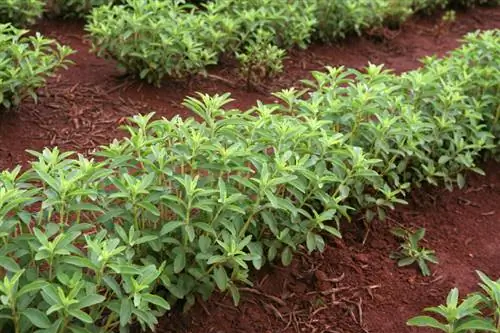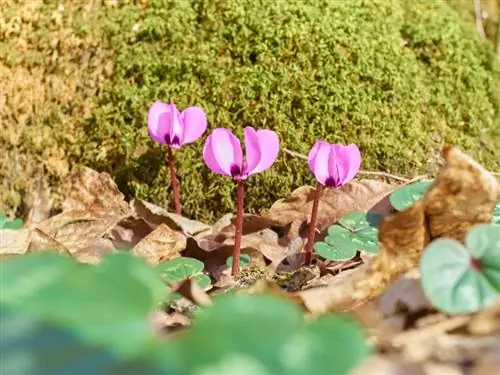- Author admin [email protected].
- Public 2023-12-16 16:46.
- Last modified 2025-01-23 11:20.
The real laurel (Laurus nobilis) is also known as spice laurel due to its versatility as a natural medicinal herb and spice. Like the poisonous cherry laurel, the plant can be propagated in various ways.

How to propagate a laurel tree?
Laurel propagation can be done by sowing seeds, separating and transplanting root suckers or cutting and rooting cuttings. These methods enable the growth of new laurel trees.
Different types of propagation and their peculiarities
To propagate the spiced laurel yourself, there are basically the following options:
- about sowing seeds
- by separating and transplanting offshoots
- by cutting and rooting cuttings
There are definitely differences between the types of propagation. Growing laurel trees for planting hedges or forming topiary figures from seedlings takes several years. While some laurel plants form very strong root runners that are suitable as a basis for new laurel trees, this may not be the case with other specimens. Propagating laurel from cuttings is only possible if you have sufficient material available in the form of freshly cut laurel branches.
Grow your own spice laurel from seeds
Seeds purchased from gardening stores can be germinated on the windowsill all year round. You should first soak the seeds in water for about 2 days before placing them about 1 centimeter deep in a mixture of loose soil and sand with a little space between the individual seeds. With constant moisture and in a bright location, the seeds usually germinate within two to three weeks. If you want to use the fruits of your own laurel trees for sowing, you must have at least two plants of different sexes at the location for successful propagation. If this is the case, self-sowing can sometimes occur around the mother plants even without your intervention.
Use root runners for propagation
The real laurel often has a strong tendency to form root runners if it has humus-rich and loose soil at its location. As soon as the resulting shoots have reached a height of at least 10 centimeters above ground, you can separate them from the mother plant after exposing the roots. Make sure to give the offshoot sufficient root material for its own development. Transplanting outdoors or into a pot is particularly gentle if it is done outside the growing season in spring or autumn.
Propagate laurel from cuttings
In autumn, cut half-ripe head cuttings from strong laurel bushes and place them in an evenly moist mixture of soil and sand. These cuttings usually form their own roots after a few months in a shady location and can then be transplanted to a sunnier location.
Tips & Tricks
If laurel is in a pot, it may be necessary to transplant it into a larger pot every two to three years. Not only can you use this opportunity to renew the planting substrate, but you should also cut off the roots and use the branches left over from the planting cut to propagate cuttings.






